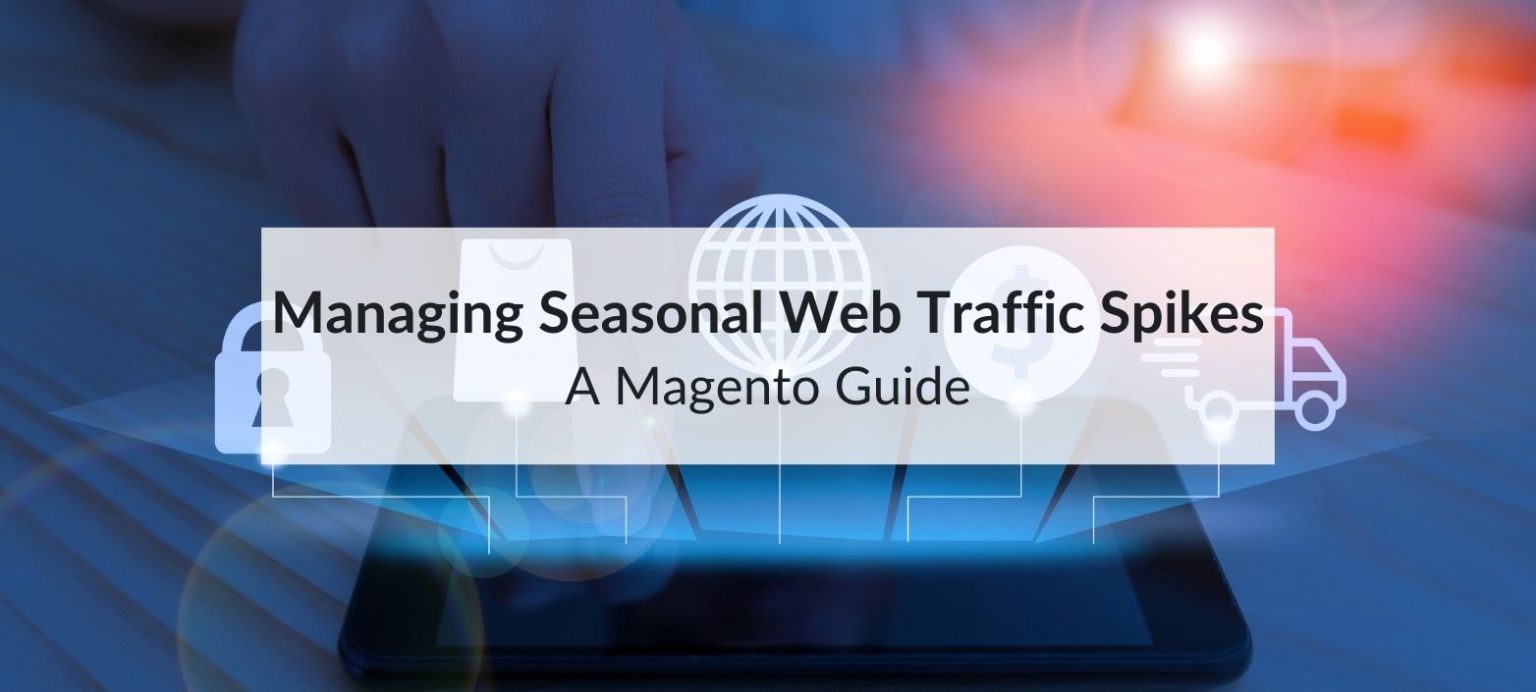Seasonal web traffic spikes, such as those during Black Friday, Cyber Monday, or holiday shopping seasons, can be both an opportunity and a challenge for e-commerce businesses. While an increase in web traffic presents a chance to boost sales, it can also lead to performance bottlenecks, website crashes, and a poor customer experience. As a Magento store owner, managing these spikes effectively is crucial to capitalizing on high-demand periods. In this guide, we’ll explore strategies and best practices to handle seasonal web traffic spikes in Magento.
Why Seasonal Web Traffic Spikes Matter
According to Adobe Analytics, online holiday sales in 2023 exceeded $211 billion, reflecting the immense revenue potential during peak seasons. However, poorly managed traffic can result in missed sales opportunities and damage to your brand’s reputation. Research from Akamai shows that even a one-second delay in page load time can reduce conversions by 7%. Ensuring your Magento store can handle high traffic is vital for maintaining customer satisfaction and maximizing revenue.

1. Optimize Your Hosting Environment
Your hosting setup plays a critical role in handling traffic surges. To ensure your store remains fast and responsive during peak times:
Tips:
- Upgrade to a Scalable Hosting Plan: Choose a hosting provider that offers scalable solutions such as cloud hosting or dedicated servers.
- Leverage a Content Delivery Network (CDN): CDNs reduce server load by delivering static content like images and videos from servers closer to your users.
- Enable Server-Side Caching: Use tools like Varnish Cache to improve load times and reduce server strain.
2. Enable Full-Page Caching in Magento
Full-page caching significantly reduces the time it takes for your pages to load by storing HTML content for quick delivery to users.
Steps:
1. Navigate to Stores > Configuration > Advanced > System.
2. Enable Full-Page Cache under the caching options.
3. Use third-party caching solutions like Redis for enhanced performance.
3. Optimize Database Performance
Database bottlenecks can slow down your site during high-traffic periods. To avoid this:
Tips:
- Regularly Clean Your Database: Remove old logs, abandoned carts, and unnecessary data.
- Use Indexing: Ensure all data is properly indexed to speed up database queries.
- Enable Asynchronous Indexing: Reduces server load by processing database updates in the background.
4. Stress Test Your Website
Simulating high-traffic scenarios can help identify potential weak points in your website’s infrastructure.
Tools for Stress Testing:
- Apache JMeter: Open-source tool for performance testing.
- LoadView: Cloud-based solution to simulate real-world traffic.
- BlazeMeter: Ideal for testing Magento-specific setups.
Conduct regular stress tests and address any identified issues before peak seasons.
5. Implement a Queue System
If your site experiences traffic beyond its capacity, a queue system can prevent server crashes and ensure a smooth customer experience.
How to Implement:
- Use extensions like Magento 2 Queue System to manage traffic efficiently.
- Display a friendly message informing customers of the queue and estimated wait times.
6. Monitor Real-Time Performance
Keeping an eye on your website’s performance during peak times allows you to address issues immediately.
Recommended Tools:
- Google Analytics: Monitor traffic patterns and identify potential bottlenecks.
- New Relic: Gain insights into application performance and server health.
- Magento’s Built-In Reports: Analyze sales and traffic data in real-time.
7. Optimize Images and Static Content
High-resolution images and unoptimized static files can slow down your site during traffic spikes.
Best Practices:
- Use image optimization tools like TinyPNG or ImageOptim.
- Implement lazy loading to defer the loading of images until they’re visible on the user’s screen.
- Minify CSS, JavaScript, and HTML files to reduce their size.
8. Prepare Your Customer Support Team
High traffic often leads to increased customer inquiries. Ensure your support team is ready to handle the influx.
Tips:
- Use live chat tools like Zendesk or LiveChat for real-time support.v
- Prepare a comprehensive FAQ page to address common questions.
- Enable chatbot functionality to assist customers with basic queries.
9. Implement Security Measures
Increased traffic can make your site a target for cyberattacks such as DDoS attacks or data breaches.
Security Steps:
- Install and regularly update an SSL certificate.
- Use Web Application Firewalls (WAF) to block malicious traffic.
- Enable two-factor authentication (2FA) for admin accounts.
10. Communicate with Customers
Keeping your customers informed during high-traffic periods enhances their experience and builds trust.
How:
- Send email notifications about upcoming sales or potential delays.
- Display real-time stock levels to manage expectations.
- Provide updates on estimated delivery times during checkout.
Conclusion
Managing seasonal web traffic spikes in Magento requires proactive planning and optimization. By focusing on hosting, caching, database performance, and customer support, you can ensure your store delivers a seamless experience, even during peak seasons. Implement these strategies to capitalize on high-demand periods and turn increased traffic into higher revenue.

